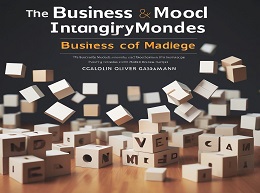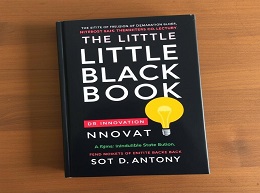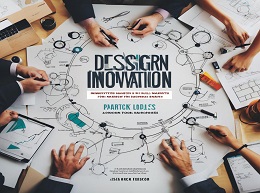The Second Bounce of the Ball: Turning Risk into Opportunity

"The Second Bounce of the Ball": Mastering Risk for Opportunity
"The Second Bounce of the Ball: Turning Risk into Opportunity" by Sir Ronald Cohen is a compelling exploration of how to navigate and capitalize on the unpredictable nature of business. Drawing on his extensive experience as a pioneer in the venture capital industry, Cohen offers valuable insights into recognizing and seizing opportunities amidst uncertainty. This detailed review will delve into the core themes of the book, supported by engaging examples and practical advice to inspire entrepreneurs and business leaders.
Sir Ronald Cohen
Sir Ronald Cohen is a renowned venture capitalist, social innovator, and philanthropist. As the co-founder of Apax Partners, one of the world's leading private equity firms, Cohen has played a significant role in shaping the venture capital landscape. His deep understanding of risk and opportunity in business provides a rich foundation for the insights shared in "The Second Bounce of the Ball."
Understanding the Metaphor
The title "The Second Bounce of the Ball" refers to the idea that predicting the initial impact of events or trends is easier than anticipating their subsequent effects. The second bounce represents the unexpected opportunities that arise from these initial impacts. Cohen argues that successful entrepreneurs are those who can foresee and capitalize on these second bounces.
Example: The Internet Boom
The rise of the internet in the 1990s is an excellent example of the second bounce. While the initial impact was the creation of numerous websites and online services, the second bounce included the development of entirely new industries such as e-commerce, social media, and cloud computing. Entrepreneurs who recognized and adapted to these second-order effects, like Amazon and Facebook, achieved remarkable success.
Embracing Uncertainty
Cohen emphasizes the importance of embracing uncertainty rather than avoiding it. He suggests that uncertainty is not just a source of risk but also a wellspring of opportunity. By developing a mindset that views uncertainty as a chance to innovate, entrepreneurs can turn potential threats into advantages.
Example: Airbnb
Airbnb’s founders embraced uncertainty when they launched their platform in 2008 during a global financial crisis. The economic downturn led many people to seek alternative income sources and cheaper travel accommodations. By recognizing this opportunity amidst uncertainty, Airbnb disrupted the traditional hospitality industry and grew into a billion-dollar business.
Developing a Clear Vision
A clear vision is crucial for navigating the unpredictable business landscape. Cohen argues that a strong vision provides direction and purpose, helping entrepreneurs stay focused amidst uncertainty. However, he also stresses the need for flexibility to adapt this vision as circumstances change.
Example: Tesla
Elon Musk’s vision for Tesla was to accelerate the world's transition to sustainable energy. This clear and ambitious vision has guided Tesla’s innovations and strategic decisions. Despite facing numerous challenges and uncertainties, Tesla’s adaptability and commitment to its vision have enabled it to lead the electric vehicle revolution.
Identifying and Assessing Risks
Effective risk management involves identifying potential risks and assessing their impact on the business. Cohen advises entrepreneurs to conduct thorough risk assessments and develop strategies to mitigate these risks while remaining open to emerging opportunities.
Example: Google’s Alphabet Restructuring
Google restructured itself into Alphabet Inc. to manage risk more effectively and diversify its business. By creating separate entities for its various projects and investments, Alphabet could better manage the risks associated with each initiative. This strategic move allowed Google to continue innovating in multiple fields, from autonomous vehicles to life sciences.
Fostering Innovation and Agility
Cohen highlights the importance of building a resilient organization that fosters innovation and agility. A resilient organization can quickly adapt to changes, experiment with new ideas, and pivot when necessary. This adaptability is key to turning unexpected challenges into opportunities.
Example: Netflix
Netflix’s transformation from a DVD rental service to a leading streaming platform exemplifies organizational resilience. By recognizing the potential of streaming technology and swiftly adapting its business model, Netflix turned a looming threat into a significant growth opportunity. This ability to innovate and adapt has kept Netflix at the forefront of the entertainment industry.
Embracing and Learning from Failure
Failure is an inevitable part of the entrepreneurial journey. Cohen advocates for a mindset that views failure as a learning opportunity rather than a setback. By analyzing failures and extracting valuable lessons, entrepreneurs can improve their strategies and increase their chances of future success.
Example: SpaceX
SpaceX faced multiple rocket launch failures in its early years. Instead of being discouraged, Elon Musk and his team used these failures to refine their technology and processes. This relentless commitment to learning and improvement enabled SpaceX to achieve groundbreaking successes, such as the first privately-funded spacecraft to reach orbit and the development of reusable rockets.
Cultivating a Risk-Tolerant Culture
Cohen advises entrepreneurs to cultivate a culture that tolerates risk and encourages experimentation. A risk-tolerant culture empowers employees to take calculated risks and explore innovative solutions, which can lead to significant breakthroughs.
Example: Amazon’s “Day 1” Philosophy
Amazon’s “Day 1” philosophy, championed by Jeff Bezos, encourages employees to approach their work with the enthusiasm and innovation of a startup. This mindset promotes a willingness to take risks and experiment, contributing to Amazon’s continuous growth and success in various sectors.
Building a Diverse and Skilled Team
A diverse and skilled team is essential for navigating uncertainty and capitalizing on opportunities. Cohen emphasizes the importance of assembling a team with varied expertise and perspectives to tackle complex challenges and drive innovation.
Example: Apple’s Design and Technology Integration
Apple’s success can be attributed in part to its diverse and skilled team, which integrates design and technology seamlessly. The collaboration between designers, engineers, and business strategists has led to the creation of iconic products like the iPhone and MacBook, setting Apple apart in the tech industry.
"The Second Bounce of the Ball: Turning Risk into Opportunity" by Sir Ronald Cohen is a masterful guide for entrepreneurs seeking to navigate the unpredictable nature of business. By embracing uncertainty, developing a clear vision, and fostering a resilient organization, entrepreneurs can turn risks into opportunities and achieve remarkable success.
Cohen’s insights, supported by real-world examples, offer practical advice for entrepreneurs at any stage of their journey. Whether you’re a seasoned business leader or a budding entrepreneur, "The Second Bounce of the Ball" provides invaluable strategies for recognizing and seizing opportunities amidst uncertainty.
In a world where change is the only constant, Cohen’s principles of risk management, innovation, and adaptability are more relevant than ever. By adopting the mindset and strategies outlined in this book, entrepreneurs can not only survive but thrive in the face of uncertainty, transforming potential risks into significant opportunities for growth and success.













